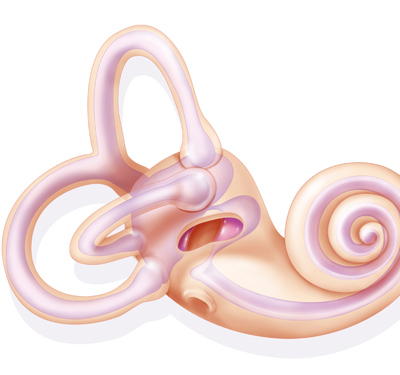Manipulating away the dizziness
Doctors need to be more aware about an easily treated condition that causes intense bouts of dizziness.
Published online 29 November 2016

Lorem ipsum dolor sit amet, consectetur adipiscing elit, sed do eiusmod tempor incididunt ut labore et dolore magna aliqua.
BSIP SA / Alamy Stock Photo
After a 250-mile caravan drive in the UK, a 55-year-old woman woke up to a sensation of severe spinning — a kind of dizziness called vertigo — and vomiting. Over the past two years, she had experienced recurrent episodes of vertigo and had been prescribed medications that failed to manage the condition. She called the emergency medical services, who in turn contacted the local on-call GP since an ambulance was not immediately available. The woman described feeling like the room was spinning as she got out of bed.
“Benign paroxysmal positional vertigo (BPPV) has a lifetime prevalence of 3.2% in females and 1.6% in males,” explains Khalid Bashir, emergency medicine senior consultant at Qatar’s Hamad General Hospital in Doha. “The risk of getting BPPV increases as people get older and can be triggered by injury, infection, lack of sleep, prolonged immobility, stress, high blood pressure, low calcium levels and osteoporosis medications.”
BPPV is a benign condition of the inner ear. Calcium carbonate crystals break away from the inner lining of a part of the inner ear called the utricle to relocate in one of the three “semi-circular canals” that are partially responsible — along with the eyes and nerve messages from joints and muscles — for giving us information about the movement and position of the head. When the crystals move in the semi-circular canals during various head movements, they send off messages to the brain that conflict with messages from the other ear and the rest of the body. This confuses the brain, leading to vertigo.
Bashir describes the case he treated while working in the UK in the Journal of Emergency Medicine Trauma & Acute Care. A diagnosis of BPPV was confirmed after taking the patient’s history and conducting a simple bedside test that involves asking the patient to lie back and move their head in certain directions. The case was treated using a manoeuvre that involves a series of four movements that dislodge the crystals from the semi-circular canal, sending it back into the utricle where they don’t cause trouble.
“BPPV is a disabling put potentially curable condition that most physicians should be able to treat effectively,” says Bashir. “Lack of knowledge and confidence about diagnosing BPPV and its subtypes, lack of familiarity with the manoeuvre, and lack of time are some of the several reasons why some GPs and emergency physicians do not diagnose and treat this condition as frontline doctors. There is a need to educate the public and physicians about this condition to prevent delay in diagnosis and avoid costly and often unnecessary investigations,” he says.
Bashir is currently in the process of publishing a new study that describes a modified manoeuvre he has developed to treat the condition. Different manoeuvres are required depending on which semi-circular canal the crystals move to. Bashir’s manoeuvre is a technique that combines three others. “Since 2001, I have used this manoeuvre on over 3,000 patients with excellent success and trained over 100 doctors and nurses to help treat patients in the UK and Qatar,” he says.
References
-
- Bashir, K., Tariq, T., Irfan, F. B. & Pathan, S. A. Resolution of severe vertigo in a remote location by the modified Epley maneuver. J. Emerg. Med. Trauma Acute Care (2015).| article
DOI: 10.1038/qsh.2016.138

